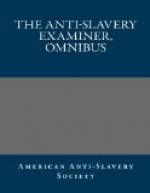The Wesleyan chapel in Bridgetown is a spacious building, well filled with worshippers every Sabbath. We attended service there frequently, and observed the same indiscriminate sitting of the various colors, which is described in the account of St. Paul’s church.
The Wesleyan missionaries have stimulated the clergy to greater diligence and faithfulness, and have especially induced them to turn their attention to the negro population more than they did formerly.
There are several local preachers connected with the Wesleyan mission in Barbadoes, who have been actively laboring to promote religion among the apprentices. Two of these are converted soldiers in his Majesty’s service—acting sergeants of the troops stationed in the island. While we were in Barbadoes, these pious men applied for a discharge from the army, intending to devote themselves exclusively to the work of teaching and preaching. Another of the local preachers is a negro man, of considerable talent and exalted piety, highly esteemed among his missionary brethren for his labors of love.
THE MORAVIAN MISSION.
Of the Moravians, we learned but little. Circumstances unavoidably prevented us from visiting any of the stations, and also from calling on any of the missionaries. We were informed that there were three stations in the island, one in Bridgetown, and two in the country, and we learned in general terms, that the few missionaries there were laboring with their characteristic devotedness, assiduity, and self-denial, for the spiritual welfare of the negro population.
CHAPTER III.
COLORED POPULATION.
The colored, or as they were termed previous to abolition, by way of distinction, the free colored population, amount in Barbadoes to nearly thirty thousand. They are composed chiefly of the mixed race, whose paternal connection, though illegitimate, secured to them freedom at their birth, and subsequently the advantages of an education more or less extensive. There are some blacks among them, however, who were free born, or obtained their freedom at an early period, and have since, by great assiduity, attained an honorable standing.
During our stay in Barbadoes, we had many invitations to the houses of colored gentlemen, of which we were glad to avail ourselves whenever it was possible. At an early period after our arrival, we were invited to dine with Thomas Harris, Esq. He politely sent his chaise for us, as he resided about a mile from our residence. At his table, we met two other colored gentlemen, Mr. Thorne of Bridgetown, and Mr. Prescod, a young gentleman of much intelligence and ability. There was also at the table a niece of Mr. Harris, a modest and highly interesting young lady. All the luxuries and delicacies of a tropical clime loaded the board—an epicurean variety of meats, flesh, fowl, and fish—of vegetables, pastries, fruits, and nuts, and that invariable accompaniment of a West India dinner, wine.




